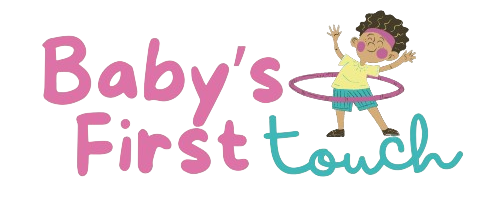Table of Contents
- Understanding the Landscape of Substance Abuse
- The Power of Prevention: Building Resilience Before Problems Start
- Intervention: Stepping In When Help is Needed
- Navigating Treatment and Recovery: The Path Forward
- Actionable Steps for Everyone: How You Can Help
- Conclusion: Embracing Hope, Taking Action
The Unseen Battle: Addressing Substance Abuse Through Prevention and Intervention
Substance abuse. It’s a term whispered in hushed tones, a shadow lurking in the corners of families and communities worldwide. It’s the unseen battle fought by millions, often in silence, fueled by stigma and misunderstanding. But what if we brought it into the light? What if, instead of judgment, we offered understanding, support, and tangible solutions? Addressing substance abuse isn’t just about dealing with a crisis after it hits; it’s about building stronger foundations through prevention and knowing how to step in effectively with intervention when needed. It’s about fostering hope and demonstrating that recovery is not just possible, but achievable.
This isn’t just a distant problem affecting ‘other people.’ It touches colleagues, neighbors, friends, family members, and perhaps even ourselves. The ripple effects are vast, impacting physical and mental health, relationships, careers, and community well-being. Ignoring it doesn’t make it disappear; confronting it with knowledge, compassion, and action is our most powerful weapon. This article dives deep into the complex world of substance abuse, exploring the critical roles of both prevention and intervention, offering actionable insights for individuals, families, and communities ready to make a difference.

Understanding the Landscape of Substance Abuse
Before we can effectively address a problem, we need to understand it. Substance abuse is more than just occasional overindulgence; it’s a complex issue with deep roots and far-reaching consequences.
What is Substance Abuse and Addiction?
Substance Abuse, often used interchangeably with Substance Use Disorder (SUD), refers to the harmful or hazardous use of psychoactive substances, including alcohol and illicit drugs. It’s characterized by a pattern of substance use leading to significant impairment or distress in a person’s life. This isn’t about willpower; it’s a recognized medical condition.
Addiction represents the most severe form of SUD. It’s a chronic, relapsing brain disease characterized by compulsive drug seeking and use, despite harmful consequences. Key features include:
- Compulsion: An overwhelming urge to use the substance.
- Loss of Control: Difficulty limiting substance use.
- Continued Use Despite Harm: Persisting even when facing negative consequences (health, relationships, legal issues).
- Withdrawal Symptoms: Experiencing physical or psychological discomfort when stopping use.
- Tolerance: Needing more of the substance to achieve the desired effect.
It’s crucial to understand that addiction changes the brain’s structure and function, particularly areas involved in reward, stress, self-control, and judgment. This explains why simply ‘stopping’ is incredibly difficult for someone struggling with addiction.
The Scope of the Problem: More Common Than You Think
Substance abuse is a global health crisis. Millions struggle daily, and the statistics paint a sobering picture:
- Globally, hundreds of millions grapple with alcohol or drug use disorders.
- Overdose deaths, particularly involving opioids, have reached alarming rates in many countries.
- Substance abuse often co-occurs with mental health disorders like depression, anxiety, and PTSD, complicating diagnosis and treatment.
- The economic burden is immense, encompassing healthcare costs, lost productivity, and criminal justice expenses.
- The social cost includes strained families, neglected children, increased homelessness, and community instability.
These numbers represent real people, real families, and real communities facing immense challenges. Understanding the scale motivates us to prioritize effective prevention and intervention strategies.
Why Do People Use Substances? Unpacking the Risk Factors
There’s no single reason why someone develops a substance use disorder. It’s typically a complex interplay of various factors:
- Genetics: Family history of addiction significantly increases risk. Certain genetic markers can make individuals more susceptible.
- Environment: Exposure to substance use at home, school, or in the community normalizes it. Factors like poverty, lack of economic opportunity, and high stress environments also play a role.
- Early Exposure: Starting substance use at a young age, when the brain is still developing, dramatically increases the likelihood of developing an addiction later.
- Trauma and Adverse Childhood Experiences (ACEs): Abuse, neglect, violence, or significant loss can lead individuals to self-medicate with substances to cope with emotional pain.
- Mental Health Issues: As mentioned, conditions like depression, anxiety, bipolar disorder, or ADHD often co-occur with SUDs. Substances may be used to alleviate symptoms, creating a vicious cycle.
- Method of Use: Routes like injecting or smoking deliver drugs to the brain faster, increasing their addictive potential.
Recognizing these risk factors is crucial for targeting prevention efforts and understanding the challenges individuals face.

The Power of Prevention: Building Resilience Before Problems Start
While treatment is vital, the most effective long-term strategy for reducing the impact of substance abuse is prevention. It’s about proactively building defenses and reducing risks before substance use even begins or escalates into a disorder.
What Does Prevention Look Like?
Prevention isn’t a one-size-fits-all approach. It occurs across different levels:
- Primary Prevention: Aims to prevent substance use initiation altogether, often targeting broad populations like youth or entire communities.
- Secondary Prevention: Focuses on identifying individuals at high risk or those showing early signs of substance use and intervening to prevent progression to a disorder.
- Tertiary Prevention: Involves treatment and rehabilitation for those already diagnosed with an SUD, aiming to reduce relapse and negative consequences. (While related to treatment, its goal is preventing further harm).
Effective prevention programs are often comprehensive, multi-faceted, and sustained over time.
Key Prevention Strategies: A Multi-Layered Approach
Strengthening Families: The First Line of Defense
Families play a pivotal role in shaping attitudes and behaviors around substance use. Strategies include:
- Open Communication: Creating a safe space for honest conversations about drugs, alcohol, stress, and mental health.
- Strong Bonds: Spending quality time together fosters connection and reduces feelings of isolation.
- Clear Expectations & Boundaries: Setting consistent rules about substance use and consequences.
- Parental Monitoring: Knowing children’s friends, activities, and whereabouts.
- Modeling Healthy Behavior: Parents’ own attitudes and behaviors towards substances have a powerful influence.
School-Based Programs: Educating and Empowering Youth
Schools are critical settings for reaching young people. Effective programs often incorporate:
- Accurate Information: Teaching about the risks and consequences of drug and alcohol use.
- Life Skills Training: Building skills in decision-making, problem-solving, communication, and refusal techniques.
- Social-Emotional Learning (SEL): Fostering self-awareness, self-management, social awareness, relationship skills, and responsible decision-making.
- Positive Peer Influence: Creating a school climate that discourages substance use and promotes healthy alternatives.
Community Coalitions & Policies: Shaping the Environment
Broader community efforts can significantly impact substance use rates:
- Reducing Access: Enforcing laws regarding underage drinking and illegal drug sales, limiting outlet density for alcohol.
- Changing Norms: Public awareness campaigns that challenge misconceptions and highlight the risks of substance abuse.
- Promoting Healthy Alternatives: Supporting positive youth development programs, recreational activities, and community events.
- Policy Advocacy: Supporting measures like increased taxes on alcohol and tobacco, prescription drug monitoring programs, and zoning regulations.
Promoting Protective Factors: Building Inner Strength
While reducing risk is important, strengthening protective factors is equally crucial. These buffer individuals against adversity:
- Positive Relationships: Strong connections with family, peers, mentors, and community members.
- Effective Coping Skills: Healthy ways to manage stress, disappointment, and difficult emotions.
- Sense of Purpose: Engagement in school, hobbies, sports, volunteering, or spiritual practices.
- Positive Self-Esteem: A belief in one’s own worth and capabilities.
- Access to Support: Knowing where to turn for help when facing challenges (school counselors, mental health services).
Early Identification: Spotting the Warning Signs
Part of prevention, especially secondary prevention, involves recognizing early warning signs that someone might be struggling with substance use. While these signs can indicate other issues, a pattern might warrant concern:
- Behavioral Changes: Increased secrecy, withdrawal from family/friends, loss of interest in hobbies, changes in friends, unexplained financial problems, neglecting responsibilities, risk-taking behaviors.
- Physical Changes: Changes in appearance (poor hygiene), unusual smells, bloodshot eyes, dilated/constricted pupils, weight loss/gain, sleep disturbances (too much/too little), slurred speech, lack of coordination.
- Psychological Changes: Mood swings, irritability, anxiety, paranoia, lack of motivation, memory problems, difficulty concentrating, unexplained personality shifts.
Catching potential problems early allows for intervention before they escalate into full-blown addiction.

Intervention: Stepping In When Help is Needed
Despite the best prevention efforts, some individuals will develop substance use problems. When this happens, intervention becomes crucial. It’s about interrupting the destructive pattern of substance abuse and guiding the individual towards help.
Recognizing the Need for Intervention
Denial is a powerful hallmark of addiction, both for the person using substances and sometimes for their loved ones. Recognizing that use has crossed the line from casual to problematic or compulsive is the first step. Signs that intervention may be necessary include:
- Negative consequences piling up (job loss, relationship breakdowns, health issues, legal troubles).
- Failed attempts to cut down or stop using.
- Using substances becomes the central focus of life.
- Increased tolerance and withdrawal symptoms.
- Continued use despite clear harm.
- Concerns expressed by multiple people.
Intervention isn’t about blame; it’s about expressing care and concern and offering a path forward.
Types of Interventions: Different Approaches
Informal Conversations: The Gentle Approach
Often, the first step is a simple, private conversation. Expressing concern non-judgmentally, using “I” statements (e.g., “I’m worried about you because I’ve noticed…”), and offering support can sometimes be enough to encourage someone to seek help, especially in the earlier stages.
Formal Interventions: A Structured Plan
When informal approaches fail or the situation is more severe, a formal intervention might be necessary. This is a carefully planned process where family, friends, and sometimes colleagues gather (often with the guidance of a professional interventionist) to confront the individual about their substance use and its impact. Key elements include:
- Planning: Deciding who will participate, what will be said (specific examples of harmful behavior), and what treatment options will be presented.
- Professional Guidance: An interventionist can help structure the meeting, manage emotions, and ensure safety.
- Specific Consequences: Participants outline boundaries and consequences if the individual refuses help (e.g., no longer providing financial support, changes in living arrangements).
- Focus on Care: Emphasizing love and concern as the motivation.
- Pre-Arranged Treatment: Having a treatment plan and facility ready for immediate admission.
Crisis Intervention: Addressing Immediate Danger
In situations involving overdose, suicidal ideation, violence, or acute medical/psychiatric emergency related to substance use, immediate professional help (calling emergency services, crisis hotlines) is paramount. Safety is the top priority.
How to Approach an Intervention Effectively
Whether formal or informal, certain principles increase the chances of a positive outcome:
- Plan Carefully: Don’t act impulsively out of anger or frustration.
- Choose Participants Wisely: Include people the individual respects and cares about. Avoid those who might be overly emotional or enabling.
- Focus on Behavior, Not Character: Describe specific incidents and their impact, avoiding labels like “addict” or “alcoholic” in a blaming way.
- Be Unified: Present a consistent message of concern and the need for change.
- Offer Solutions: Present concrete treatment options.
- Manage Expectations: The person may not accept help immediately. The intervention plants a seed.
- Prioritize Safety: If there’s any risk of violence, involve professionals or law enforcement.
Overcoming Barriers to Seeking Help
Many factors prevent individuals from accessing treatment, even after an intervention:
- Stigma: Fear of judgment from society, employers, family, or friends.
- Cost and Insurance: Treatment can be expensive, and navigating insurance coverage is often complex.
- Lack of Access: Shortages of treatment facilities, long waiting lists, geographical barriers (especially in rural areas).
- Denial: Unwillingness to acknowledge the severity of the problem.
- Fear of Withdrawal: Anxiety about the physical and emotional discomfort of stopping use.
- Co-occurring Disorders: Untreated mental health issues can hinder engagement in addiction treatment.
Addressing these barriers through policy change, community support, and destigmatization efforts is crucial.
Navigating Treatment and Recovery: The Path Forward
Intervention aims to connect individuals with treatment. Recovery is the ongoing process of healing and building a life free from active addiction.
The Treatment Continuum: A Range of Options
No single treatment works for everyone. Effective care is tailored to individual needs and often involves multiple stages:
- Detoxification (Detox): Medically supervised withdrawal management to safely clear substances from the body. This is often the first step but is not treatment in itself.
- Inpatient/Residential Treatment: Structured, intensive care in a specialized facility, offering 24/7 support.
- Outpatient Treatment: Regular therapy sessions and support while living at home. Intensive Outpatient Programs (IOPs) and Partial Hospitalization Programs (PHPs) offer more structure than standard outpatient care.
- Therapy/Counseling: Individual, group, and family therapy address the psychological aspects of addiction (e.g., Cognitive Behavioral Therapy – CBT, Dialectical Behavior Therapy – DBT).
- Medication-Assisted Treatment (MAT): Using medications (like methadone, buprenorphine, naltrexone) combined with counseling to treat opioid or alcohol use disorders, reducing cravings and withdrawal.
Finding the Right Help: Personalizing the Journey
Choosing the right treatment involves:
- Professional Assessment: A thorough evaluation by an addiction specialist or healthcare provider to determine the severity of the SUD and identify co-occurring disorders.
- Personalized Plan: Developing a treatment plan that considers the substance(s) used, duration of use, physical and mental health status, social support, and personal preferences.
- Evidence-Based Practices: Selecting programs that use scientifically validated treatment methods.
- Qualified Staff: Ensuring the facility is licensed and staffed by trained professionals.
The Role of Support Systems: Connection is Key
Recovery rarely happens in isolation. Strong support systems are vital:
- Family and Friends: Educated and supportive loved ones can provide encouragement and accountability (while also setting healthy boundaries). Family therapy can heal relationships.
- Support Groups: Peer support groups like Alcoholics Anonymous (AA), Narcotics Anonymous (NA), SMART Recovery, and others offer fellowship, shared experience, and coping strategies.
- Peer Support Specialists: Individuals with lived recovery experience who provide mentorship and guidance.
- Sober Living Homes: Structured, substance-free environments that support early recovery.
Recovery is a Journey, Not a Destination
Recovery is a lifelong process that requires ongoing effort and management. Key aspects include:
- Relapse Prevention: Learning to identify triggers and developing coping strategies to manage cravings and high-risk situations. Relapse can be part of the process, not a sign of failure, but an opportunity to readjust the recovery plan.
- Long-Term Wellness: Focusing on overall health – physical, mental, emotional, and spiritual.
- Rebuilding Life: Finding purpose through work, education, hobbies, healthy relationships, and community involvement.
- Continued Support: Staying connected to support groups, therapy, or mentors.

Actionable Steps for Everyone: How You Can Help
Addressing substance abuse is a collective responsibility. Everyone has a role to play.
For Individuals:
- Practice Self-Awareness: Monitor your own substance use patterns and relationship with alcohol or drugs.
- Build Healthy Coping Mechanisms: Find constructive ways to manage stress, anxiety, and boredom (exercise, hobbies, mindfulness).
- Seek Help Early: If you’re concerned about your use, talk to a doctor, therapist, or trusted friend. Don’t wait for things to get worse.
- Be Informed: Understand the risks associated with different substances.
For Families & Friends:
- Educate Yourself: Learn about addiction as a disease to foster empathy and understanding.
- Communicate Openly: Talk about substance use risks without lecturing or judgment.
- Offer Support, Not Enablement: Encourage treatment and recovery, but avoid actions that shield the person from the consequences of their use.
- Set Healthy Boundaries: Protect your own well-being. It’s okay to say no.
- Practice Self-Care: Dealing with a loved one’s addiction is stressful. Seek support for yourself (e.g., Al-Anon, Nar-Anon, therapy).
- Know How to Intervene: Understand the principles of effective intervention if needed.
For Communities:
- Reduce Stigma: Talk openly about addiction and recovery. Challenge negative stereotypes. Use person-first language (e.g., “person with a substance use disorder” instead of “addict”).
- Support Local Prevention Programs: Get involved with or support school and community initiatives.
- Advocate for Policy Change: Support policies that increase access to prevention, treatment, and recovery services, including mental healthcare.
- Promote Recovery-Friendly Environments: Encourage workplaces and community spaces that support individuals in recovery.
- Support Harm Reduction Strategies: Initiatives like needle exchange programs and naloxone distribution save lives and connect people to care.
Conclusion: Embracing Hope, Taking Action
The journey of addressing substance abuse is complex and challenging, but it is far from hopeless. By embracing a comprehensive approach that prioritizes robust prevention strategies, we can build resilience in individuals and communities, significantly reducing the likelihood of substance use disorders taking hold. Strengthening families, empowering youth through education, and fostering supportive community environments are foundational pillars in this effort.
Equally critical is the courage and compassion required for effective intervention. Recognizing the signs, knowing how to step in with care, and guiding individuals towards appropriate treatment can literally save lives. Overcoming stigma and ensuring access to a full continuum of evidence-based care, from detox to long-term recovery support, are essential components of a humane and effective response.
Recovery is possible, and it happens every day. It requires dedication, support, and a belief in the potential for change. Whether you are seeking help for yourself, supporting a loved one, or working to strengthen your community, your actions matter. Let’s move beyond the shadows of stigma and silence, and work together to bring understanding, support, and healing to the forefront of the fight against substance abuse. The time for action is now.



